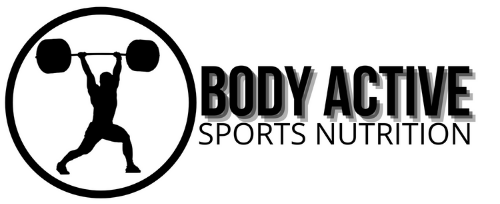Achieving weight loss goals while sticking to a budget may seem challenging, but with strategic choices, it’s entirely possible to prioritize health without breaking the bank. When considering the most cost-effective foods for weight loss, it’s essential to focus on nutrient density, satiety, and versatility. This article explores eating well on a budget that can support your weight loss journey while keeping your wallet happy.
Affordable Foods to Aid Weight Loss
1. Beans and Legumes: Protein-Packed Powerhouses
Beans and legumes are incredibly affordable and nutrient-dense, making them a staple for weight-conscious budgets. They are rich in protein, fiber, and complex carbohydrates, which promote satiety and help regulate blood sugar levels. Options like black beans, lentils, chickpeas, and kidney beans are versatile and can be used in soups, salads, stews, and even as meat substitutes in various dishes.
2. Oats: Fiber-Rich and Filling
Oats are not only economical but also an excellent source of soluble fiber, which aids in digestion and promotes a feeling of fullness. Starting your day with a bowl of oatmeal can keep hunger at bay and prevent overeating later on. Customize your oats with fruits, nuts, and a drizzle of honey or maple syrup for added flavor without compromising on nutrition.
3. Eggs: Affordable Protein Powerhouses
Eggs are a nutritional powerhouse packed with high-quality protein and essential nutrients like vitamins B12 and D. They are versatile and can be enjoyed boiled, scrambled, poached, or as an ingredient in various dishes such as omelets and frittatas. Eggs provide sustained energy and can help you feel full longer, making them an excellent choice for budget-friendly weight loss diets.
4. Frozen Vegetables: Nutritious and Convenient
Frozen vegetables are often more budget-friendly than fresh options and are just as nutritious. They are picked at peak ripeness and frozen quickly to preserve their vitamins and minerals. Stock up on a variety of frozen vegetables like broccoli, spinach, peas, and mixed stir-fry blends to add to soups, casseroles, and stir-fries for a quick and healthy meal.
5. Canned Tuna and Salmon: Affordable Sources of Omega-3s
Canned tuna and salmon are cost-effective sources of lean protein and omega-3 fatty acids, which support heart health and brain function. They are convenient options for salads, sandwiches, wraps, and pasta dishes. Look for varieties canned in water rather than oil to minimize added fats and calories.
6. Brown Rice and Whole Grains: Budget-Friendly Staples
Brown rice and other whole grains like quinoa, barley, and bulgur are affordable sources of complex carbohydrates and fiber. They provide sustained energy and can be used as a base for meals like grain bowls, pilafs, and side dishes to accompany lean proteins and vegetables.
7. Greek Yogurt: Protein-Rich and Versatile
Greek yogurt is higher in protein and lower in sugar compared to regular yogurt, making it a nutritious and filling snack or ingredient in smoothies, parfaits, and dips. Opt for plain Greek yogurt and add your own fruit or honey to control sweetness and avoid unnecessary additives.
8. Leafy Greens (e.g., Spinach, Kale)
Low in calories but high in nutrients like vitamins, minerals, and fiber. They can be added to salads, soups, or smoothies.
9. Cottage Cheese
A low-fat dairy option rich in protein, which helps to keep you full. It can be eaten on its own, mixed with fruit, or used in recipes like smoothies or dips.
10. Berries (e.g., Strawberries, Blueberries)
These are lower in sugar compared to many other fruits and are packed with antioxidants and fiber. They can be enjoyed fresh or frozen.
11. Tofu
An affordable plant-based protein option that can be used in stir-fries, salads, or grilled dishes. Tofu is low in calories and contains all essential amino acids.
12. Quinoa
A nutritious whole grain that is high in protein and fiber. It can be used as a base for salads, side dishes, or as a substitute for rice.
13. Chia Seeds
These tiny seeds are packed with fiber and healthy fats, which help to keep you full. They can be added to yogurt, smoothies, or used as a topping for oatmeal.
14. Green Tea
While not a food, green tea is budget-friendly and known for its metabolism-boosting properties due to its catechin content. It can be enjoyed hot or cold throughout the day.
15. Chicken Thighs (Skinless, Boneless)
Chicken thighs are often more affordable than chicken breast and still provide a good source of protein. Opting for skinless, boneless cuts reduces the fat content.
16. Ground Turkey (Lean)
Lean ground turkey is a cost-effective alternative to ground beef. It’s lower in fat and can be used in various dishes such as burgers, meatballs, or chili.
17. Pork Loin
Pork loin is a relatively lean cut of pork that is economical and versatile. It can be roasted, grilled, or used in stir-fries with minimal added fats.
18. Canned Chicken
Canned chicken is convenient, shelf-stable, and budget-friendly. It can be used in sandwiches, wraps, salads, or casseroles for a quick and easy protein source.
19. Turkey Drumsticks
Turkey drumsticks are typically more affordable than turkey breast and offer a lean protein option. They can be roasted or grilled for a hearty and satisfying meal.
20. Chicken Drumsticks (Skinless)
Chicken drumsticks are often more affordable than chicken breast and can still be a lean source of protein when prepared without the skin. They can be roasted, grilled, or baked with herbs and spices for a flavorful and satisfying meal option.
Practical Tips for Eating Well on a Budget
- Plan Meals Ahead: Create a weekly meal plan based on affordable ingredients to avoid impulse purchases and reduce food waste.
- Buy in Bulk: Purchase staple items like beans, rice, oats, and frozen vegetables in bulk when possible to save money in the long run.
- Compare Prices: Check unit prices and compare different brands to find the best deals on nutritious foods.
- Use Coupons and Discounts: Take advantage of coupons, store discounts, and loyalty programs to save on groceries without sacrificing quality.
Conclusion: Balancing Health and Budget
Eating well on a budget doesn’t mean compromising on nutrition or taste. By prioritizing affordable, nutrient-dense foods like beans, oats, eggs, and frozen vegetables, you can support your weight loss goals while managing your finances responsibly. Incorporate these budget-friendly options into your meal planning and enjoy delicious, satisfying meals that contribute to your overall health and well-being. With smart choices and a bit of creativity in the kitchen, achieving weight loss on a budget is both achievable and enjoyable.

